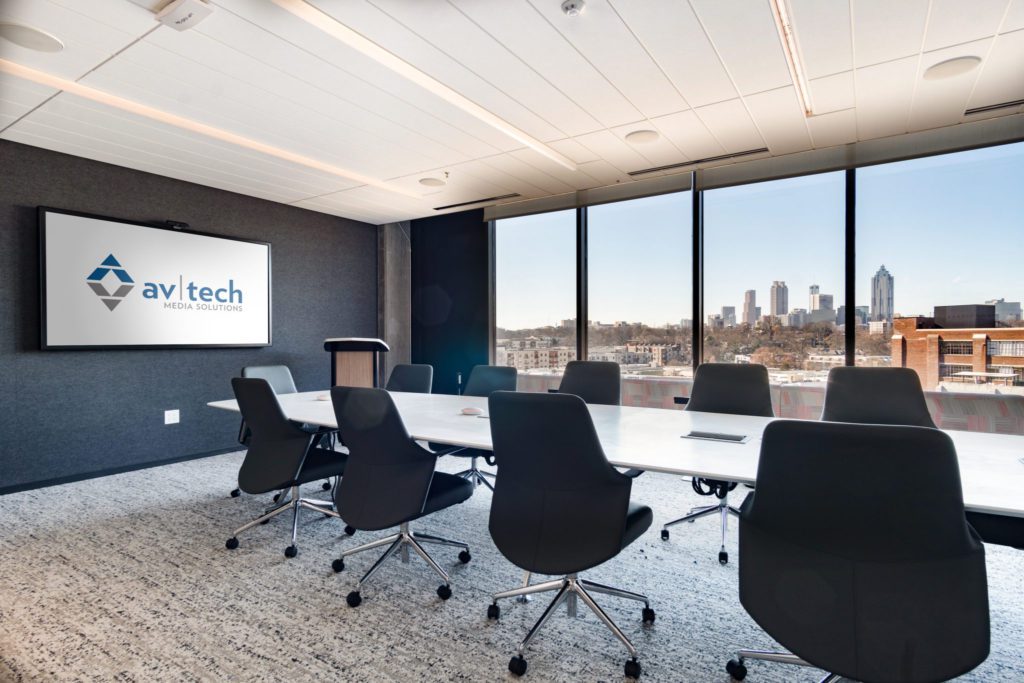Audio-video equipment in the workplace is often equated with other infrastructure like the electrical supply. The fact that they both involve cabling (hopefully well-hidden) and that you connect when you use them makes them seem even more alike.
But power supplies are a binary arrangement: on or off. AV equipment comes with a range of options that can determine how well it serves its function. Some of those decisions need to be made even before the AV equipment is installed in the room. How the equipment works in the room is a relative to ergonomics. And, as with all workplace ergonomics, the ultimate question is: Will this help the users be more productive?
The answer to this question always comes back to another question: What are people trying to do in the room? This, in turn, will determine the size of the display(s), its placement, the presence and/or placement of an audio source, how content sources will access the equipment, and how the equipment will be controlled. The easier and more intuitive you make it for users to accomplish these things, the more productive they can be.
Huddle Up
For huddle rooms, it can be assumed that people will interact with one another around a task of some kind. The AV in this case is usually an accessory to the meeting’s focus. That means the screen must be visible to all, but not the main focus. The information on the display should also be easily referenced by the participants when they are seated, usually around a table. Even though a larger screen may be more dramatic in the room, if the screen is too big it will be hard to take in.
The connections for attaching a content source (usually a computer) should be accessible to all, enabling quick switching between presenters. The controls should also be accessible to all, for adjustments on-the-fly. Of course, remote controls have a way of disappearing or tend to need new batteries at the worst possible time. Hard-wired controls are always preferable for these reasons. Many such controls for business use are now customizable touchscreen systems. This is the best way to assure that the controls are location- and role-specific. In addition, many huddle rooms offer a wireless collaboration option that will allow you to maximize the BYOD (Bring Your Own Device) experience and let others share content, even if it is on a tablet or digital device with no physical connectors.
Meeting Expectations
Rooms intended to accommodate larger gatherings are necessarily bigger, and the screen will likely need to be sized accordingly. It may also belong in a more prominent location so it can be the focus of attention as required.
Such installations often include audio reinforcement. The nature of the prospective content should drive the specifications. If you anticipate routinely hosting virtual attendees, you’ll want audio reinforcement that provides natural voice tones. (You may even want the system integrated with your teleconference system.) If you anticipate more dramatic presentations (for instance, sales), you may want more theater-quality sound. In either case, the size and location of the speakers and microphone(s) should be specified to deliver the intended experience. The materials in the construction and furnishing of the room are another consideration in sound system specifications.
While the controls should be just as intuitive, they may be located in a more unobtrusive way since they will likely only be used at the start and conclusion of the event. Depending on the function of the room, you may want to have the system automatically power on when people enter, as with the lighting or climate controls. This is almost the ultimate in ergonomics—systems designed around users and use cases—as well as a considerable productivity enhancer.
Starting Before The Beginning
As mentioned at the top of this post, the time to make decisions about the “what’s” and “where’s” of the AV technology is before the room is being built out. You (or your client) undoubtedly know the intended use of the room and the intended users. With this basic understanding—along with the square footage and the shape of the space—an AV strategist can specify the most suitable equipment and its placement.
Just as with ergonomics in office furniture, staff may not notice the thought that’s been put into the equipment. If you provide your team with an AV environment that is efficient and effective, you will notice production naturally increases, which in turn leads to results expected and experiences intended.



